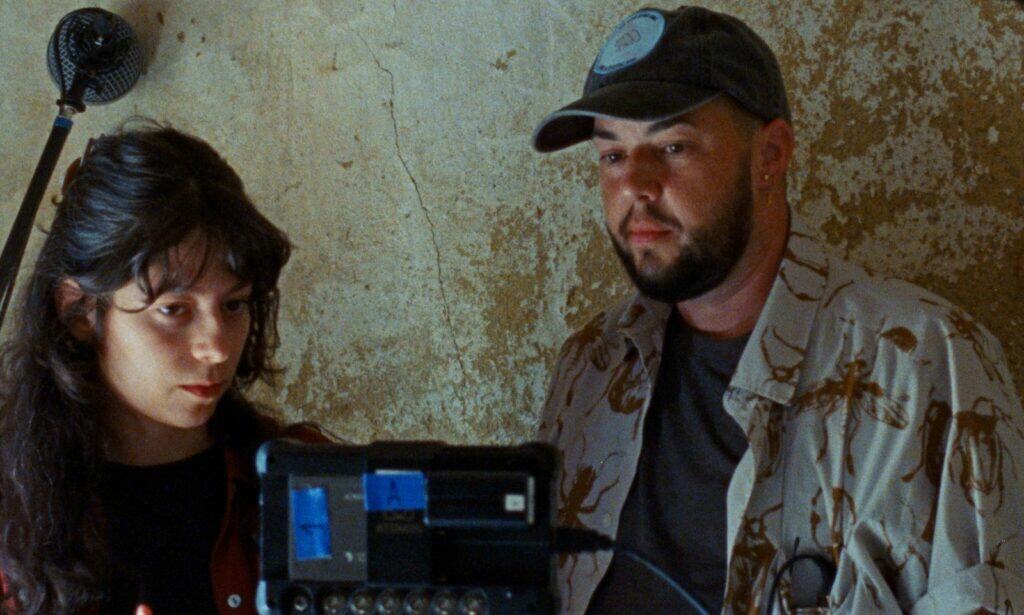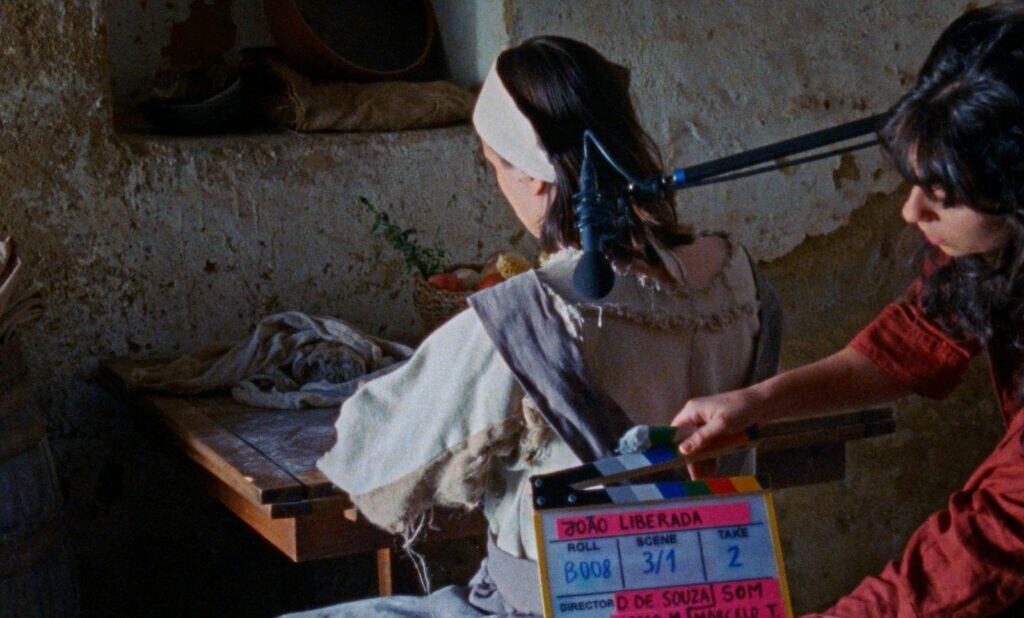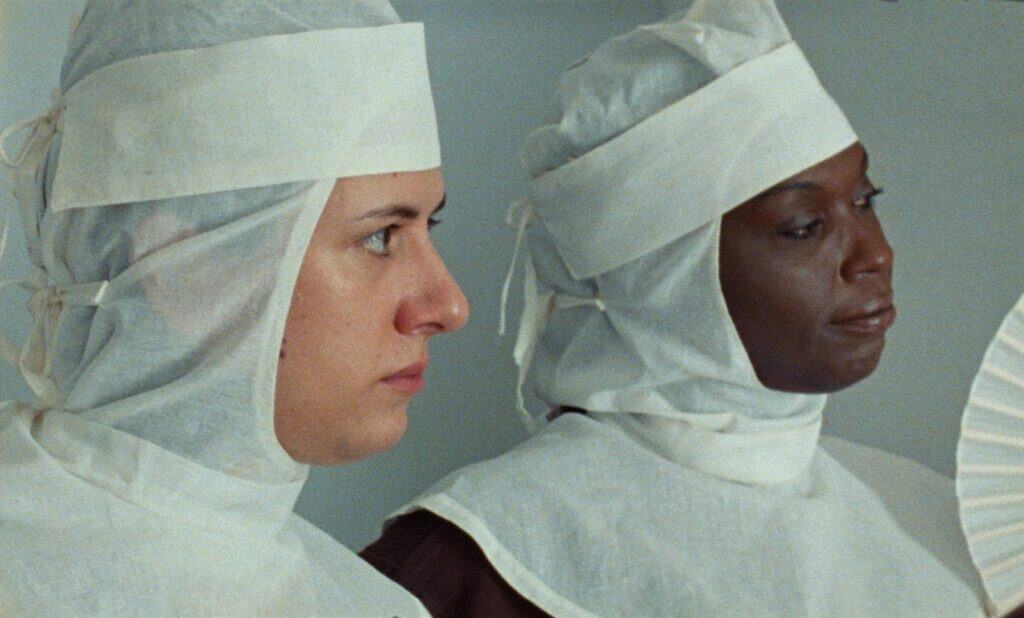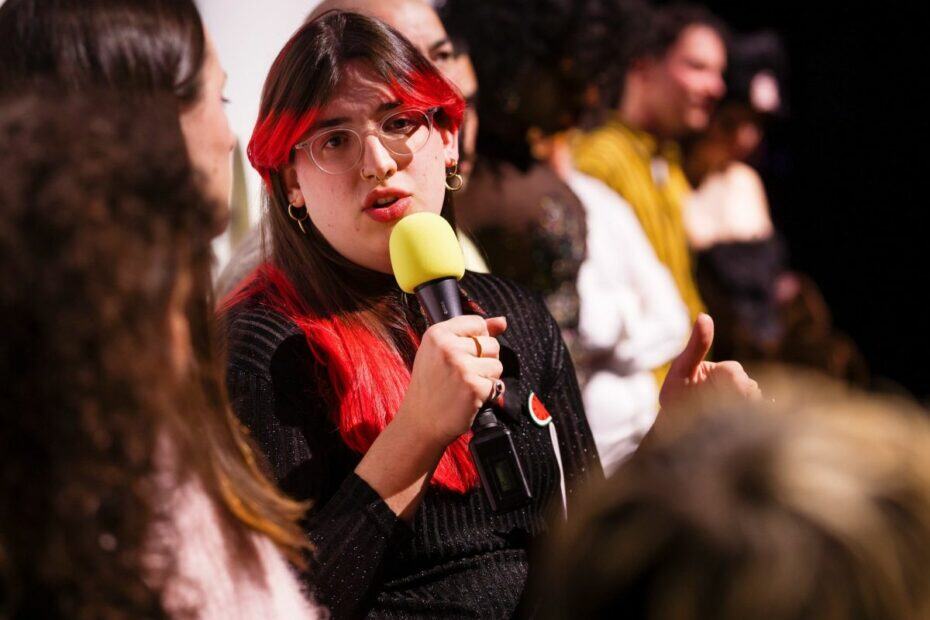Two Times João Liberada (Duas vezes João Liberada) is the first feature directed by Paola Tomás Marques. I had the pleasure of sitting down with the director to discuss this fascinating and surprising film, which was screened in the Perspectives section at the Berlinale. Read the review as well.
The Disapproving Swede: So since you’re a new director, at least for me, maybe you can tell me a little about yourself.
Paola Tomás Marques: I’ve made several shorts before this first feature. There are a lot of themes that I’ve been working on since the beginning, like gender, sexuality, and historiography. I have a background in sociology. Still, I’ve studied in two different film schools, one in Lisbon, which has a more classical approach to cinema, and Elías Querejeta Zine Eskola, which is open to different genres and ways of seeing cinema. But I am trying to explore experimental cinema.
TDS: Where is the latter located?
It’s in San Sebastián. It’s connected to the Filmoteca Basca and the San Sebastián festival.
TDS: If I understand correctly, this is a fictional character, but it is based on certain filed cases.
PTM: João Liberada is a fictional character created based on files from the Inquisition trials about gender non-conforming people—or that is what we would view them as today. This character is born from many thoughts about this investigation and what historians would say and write about these trials. It is also about being able to be critical but also self-critical about how we think of cinema, how we think about representing queer people in cinema, and it’s kind of a mix of all these things.
TDS: Are there many of those documents? I imagine these things may happen in secret sometimes.
PTM: When we talk about the Inquisition, we’re talking about people who were persecuted and judged then. For example, sodomy was a crime during the Inquisition, and people would be persecuted and judged for that, imprisoned, and sometimes burned at the stake. In Portugal, the latter was rare. Regarding the documents, they are legal ones written by the inquisitors. We didn’t focus on that part of the trials and of the life of João Librada, but the director in the film wants to focus on those kinds of ideas.

TDS: What was the genesis of the project? Not only the story but also the stylistic parts.
The stylistic part was a natural way of thinking about it. We wanted the setting, the sets, and how we filmed to be almost documentary-like. We wanted it to be a film made by a small team that could change their departments and work a little bit on everything. We wanted it to be flexible. I think the film’s cinematography is also flexible in that sense, and we try to use that in our favour. That’s also why the film is so diverse stylistically, and that’s why it crosses so many genres, from historical drama to a little bit of thriller and essay films.
TDS: And a bunch of meta-film aspects.
PTM: Yes, and meta-film aspects. So we wanted it to be rich in that sense of understanding how we can explore every device of cinema possible to put these questions on the table and play a little bit about what it is like to find the language on a film, what is the language of the director (in the film), and which is the one in our film.
You can notice in the film that when we have a historical scene by the director, suddenly the image is a little bit more orange and has a different colour grading. So, we also tried to play with that. It was really important for us for the film to be playful in general.
TDS: I will get back to some of that playfulness later. This director character, is that based on your experience in some way? I mean, the way he tries to simplify things and push his will through?
PTM: The director is a mix of my experiences working on shootings in general and hearing stories from friends. Those testimonies of working on movie sets created this character, but there are some self-critical aspects of that character—things I regret doing. In film school, I was taught that method acting was the best tool for actors, and in my first school film, I tried to apply those things. I quickly understood that it didn’t make sense in the end and that it explored too much of the personal and emotional life of the actors. Still, finding myself too much in that character is difficult.
TDS: I don’t want to overstate the resemblance between you and the director, but I like that you added that self-critical part. The director is not a simple villain.
PTM: We didn’t want him to be a simple villain. For us, it’s much more interesting to think of him as a person surrounded by people with lots of expectations on how to direct. I think that this director may also have all those kinds of pressures.

Paola Tomás Marques about her influences
TDS: I will approach the theme many directors don’t like to discuss – influences. We critics tend to compare what we see with other films. In this case, a colleague and I thought of Oliveira’s Benilde ou a Virgem Mãe when the spirit appeared.
PTM: That makes so much sense. I saw Benilde when I was in film school, and it was a film that really influenced me. It was inspiring back then. I haven’t seen it for a long time, but when I rewatched my film recently, I noticed that it connects to Benilde in a way that I thought was beautiful. It is interesting that you both thought of that.
TDS: Any other influences that come to your mind?
PTM: Pasolini, for sure; it was also a director that I really followed during film school. There’s something about how he portrays historical moments with a playfulness and a kind of campiness regarding the clothes of the nuns and all of that. I think he plays well with that anachronism. There are also Sheryl Dunya’s The Watermelon Woman and Symbiopsychotaxiplasm: Take One by William Greaves, which are references that came to use during the making of the film. Teresa Villaverdes Os mutantes as well.
TDS: What, specifically about Os mutantes?
PTM: Os Mutantes has inspired me since I was in film school, and it still does. I’ve seen it a bunch of times. I learned a lot about editing from that film.
TDS: It’s my favourite of her films.
PTM:. Mine too. All my films have been inspired by it in one way or another. When you think about it, you feel there’s a break in the stylistic thinking. I think Villaverde introduced a new style in Portuguese cinema with that film. Sometimes, there is a stereotypical way of talking about Portuguese cinema. Not that there is anything wrong with the old masters, not at all, but this is something else. She has influences like Bresson, for sure, but there is something fresh with that generation of filmmakers.

TDS: I want to come back to the playfulness. When I heard a specific piece of music being used (spoiler redacted), I sighed and hoped it would be ironic. Later, it became clear that it was. Thank you for that.
PTM: (Laughing) Perfect! That’s exactly what we wanted you to feel. We wanted to play with the overuse of this type of music in cinema.
TDS: How did you approach the cinematography? You talked about the practical stuff, but how about the aesthetics?
PTM: there’s one thing that I think is important about the aesthetic, that I think it’s what kind of brings cohesion to the film, which is the electrical device on the film, sound and image…
TDS: … Son et image like Godard used to say.
PTM: Yes. So, this idea of the lights burning the 16-millimetre film, how that becomes a device to explore hunting, to explore speaking about what’s happening at that moment, to invoke past moments suddenly in some parts of the film, even in terms of sound: What is comfortable, what is uncomfortable. At some point, the sound gets a bit awkward and glitchy. The electricity is, kind of, the main vehicle of the aesthetic of the film.
It was also a question of which shots should be handheld and which should be filmed on a tripod.
The choice of the former was the flexibility I mentioned earlier. In other scenes, we needed stillness, for example, in those night scenes. We wanted those to feel more like a horror film. It is also about being in a place where the camera doesn’t move, but something is moving in the shot, in the sound, so we needed those different approaches in different parts of the film to get to the film we have and its aesthetic.
